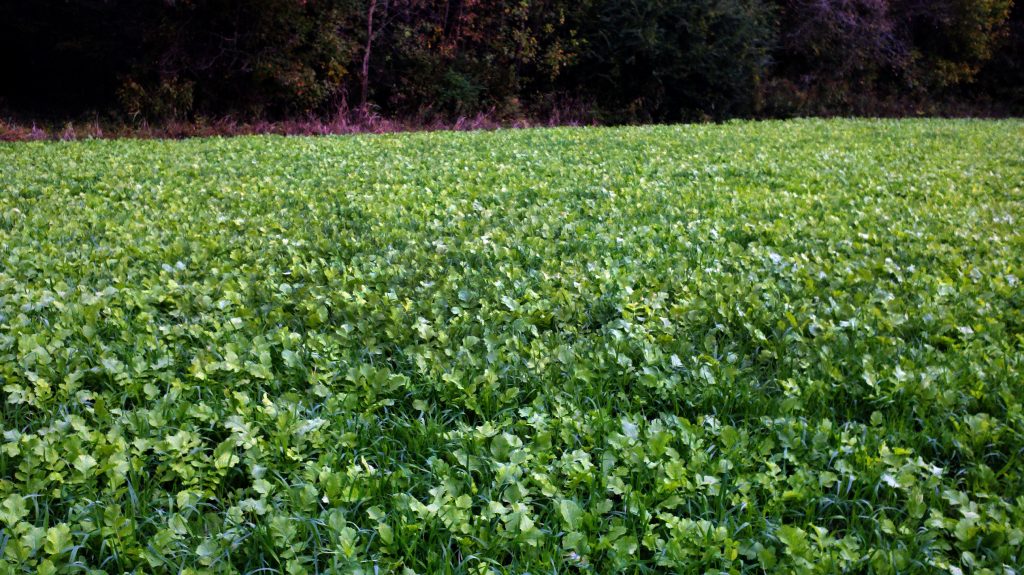Everyone I know and from everything I’ve learned about planting green fields for deer food plots recommends that if you want a successful crop that attracts deer and turkeys, you must use the correct seeds for where you’re planting and put down good fertilizer just before you plant, or as you plant. The combination of the knowledge and advice of Dale and Daniel Bumgarner of Wildlife Management Solutions in Eutaw, Alabama, and Chris Grantham of Alabama Liquid Fertilizer in Elba, Alabama, will give your fall whitetail deer food plots the best outcomes and provide the most food for both deer and turkeys.
Wildlife Management Solutions
Daniel Bumgarner of Wildlife Management Solutions (WMS) is a wildlife biologist and explains that his company provides food-plot seeds and seed blends for the southern Gulf Coast states.

“Previously my brother Dale and I were in the wildlife service and management business for private landowners, crafting wildlife-management plans and planning whitetail deer food plots. However, we had a very difficult time finding the varieties of seeds to plant in green fields for the lands we were helping to manage, Bumgarner said. “We recognized some needs in the seed business, due to the numerous types of soil in the Deep South, as well as having different kinds of climates, including high temperatures and droughts occurring at different times of the year from other parts of the country. So, we began to mix and match different seeds on test plots of land to learn which seeds would produce the most tonnage over the longest time for deer hunters specifically and also good crops for both deer and turkeys.”
Bumgarner emphasized that doing a soil test is the first step in having a great food plot that will produce the maximum tonnage of food for a deer herd.
“Any crop you plant only will be as good as the dirt. Besides the amount of fertilizer and lime that your soil test recommends, you also want to know what soil type you have, perhaps sandy soil, heavy clay soil or other kinds. With this knowledge, WMS can formulate a specific seed blend that will match-up the best with that soil type.
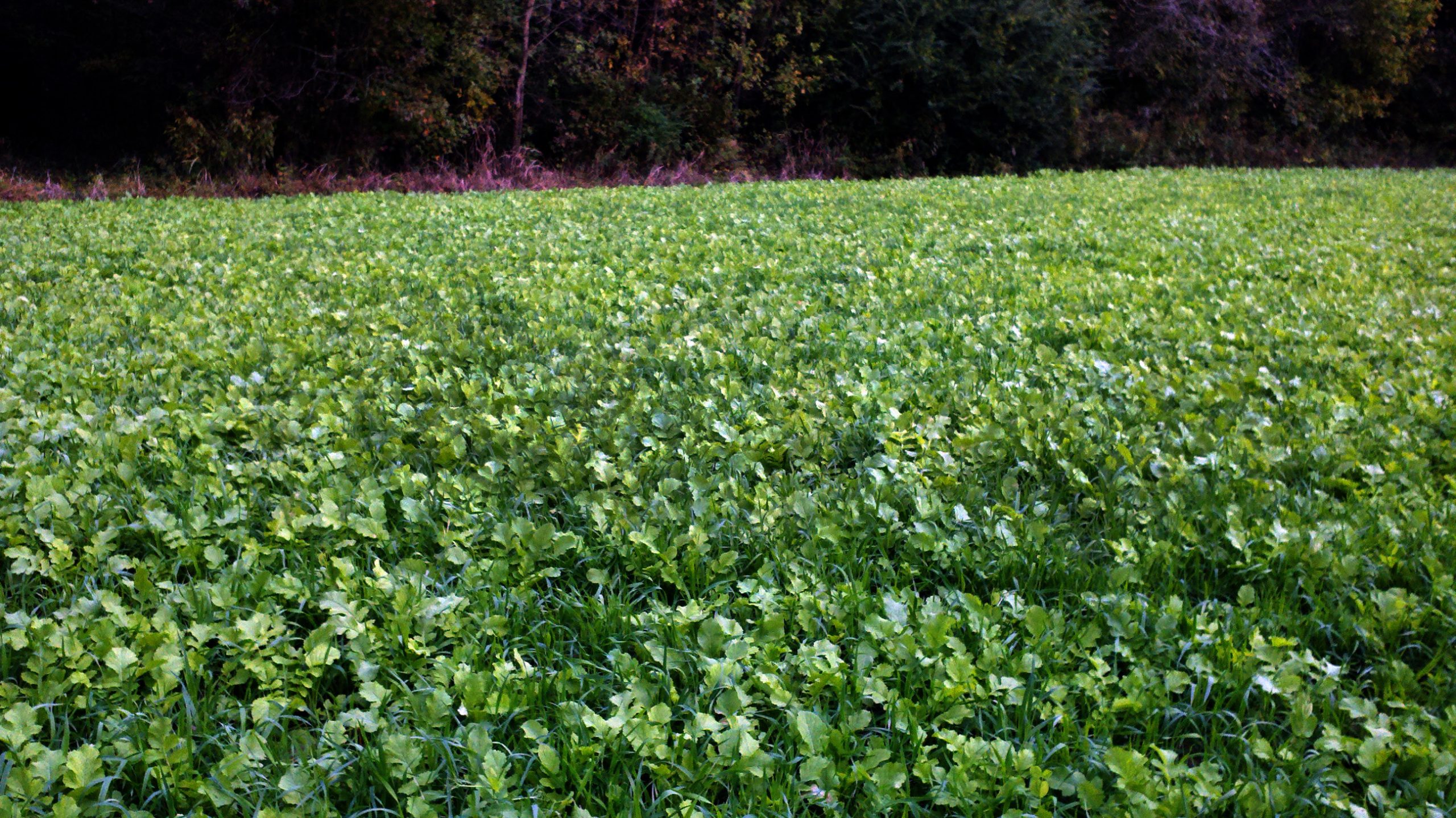
“The weatherman also can give you the best information on when’s the prime time to plant fall whitetail deer food plots. If you don’t have the right conditions for planting a green field, your green-field crop is much more likely to be a disaster than a success. You need cooler temperatures with a rain event coming behind the planting for the best success,” Bumgarner said.
Budgets for Green Field Plantings
Oftentimes the main factor on what and how much you should plant to have quality green fields that will attract deer is determined by the size of the land that you control or own and the amount
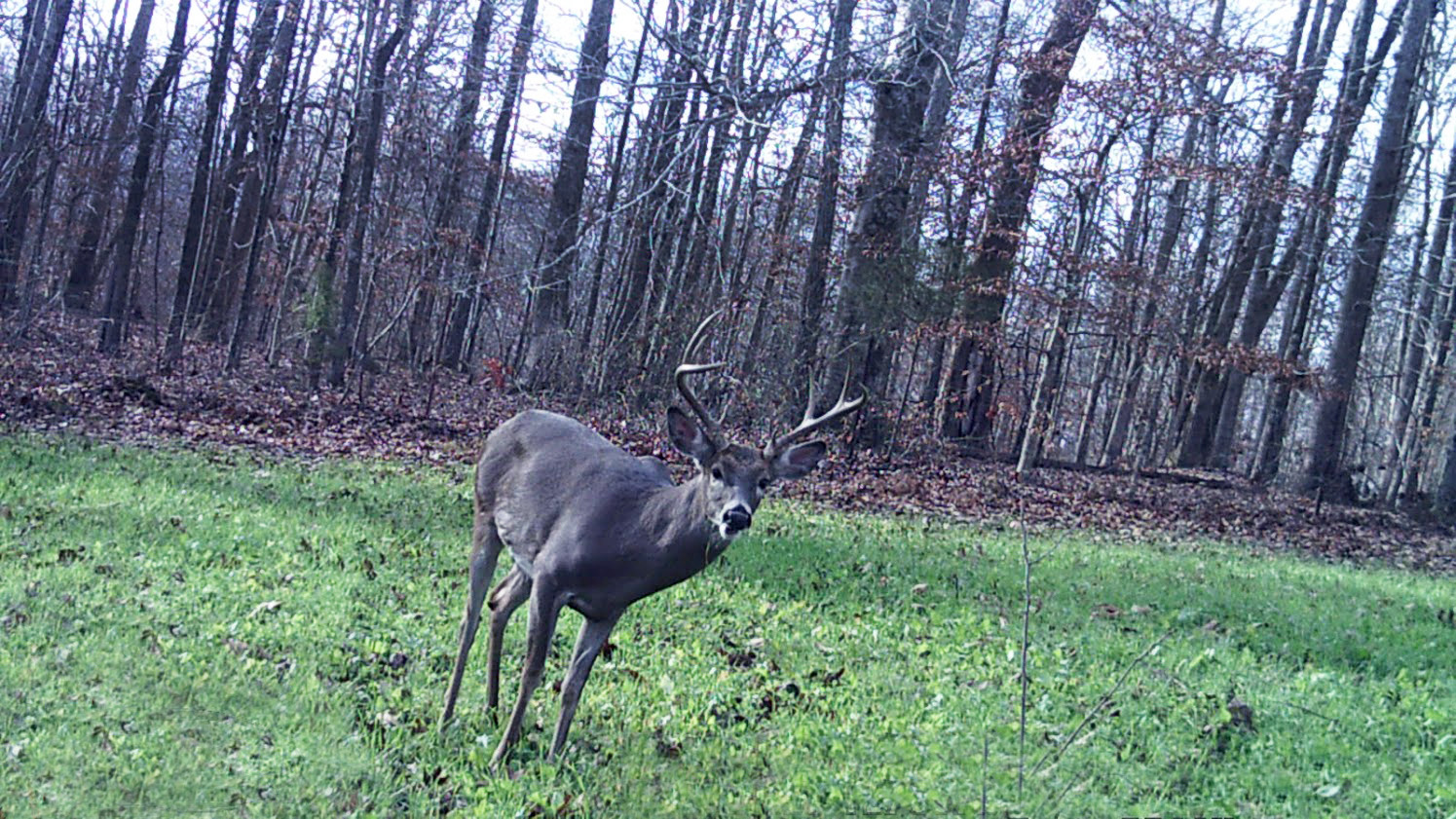
“We’ll want to know more too about the physical site you’re planting for the best seed success whether it’s a new cutover that receives a full day of sun or a green field in a creek or a river bottom that may get morning sun and afternoon shade and may hold more moisture than a clear-cut. About the only type of ground where we can’t get food plots to grow is on prairie lands where you find Selma chalk types of soil. These areas have exposed barren ground that has absolutely no type of topsoil. This kind of property is also known as white-cliff areas in the South,” Bumgarner noted.
Here’s a look at three green-field budgets that WMS offers. These options allow you to determine what seed blends you may want to consider to maximize the dollars spent for the quality and tonnage of whitetail deer food plots plantings.
1) Limited Budgets – The least-expensive green field planting Bumgarner recommends is a blend of seeds that includes cereal grains like wheat or oats. The rationale behind this is that this blend attracts deer, is easy to plant, and per acre cost of seed, wheat or oats or both, will be the least-expensive seeds to purchase for your fall whitetail deer food plots.
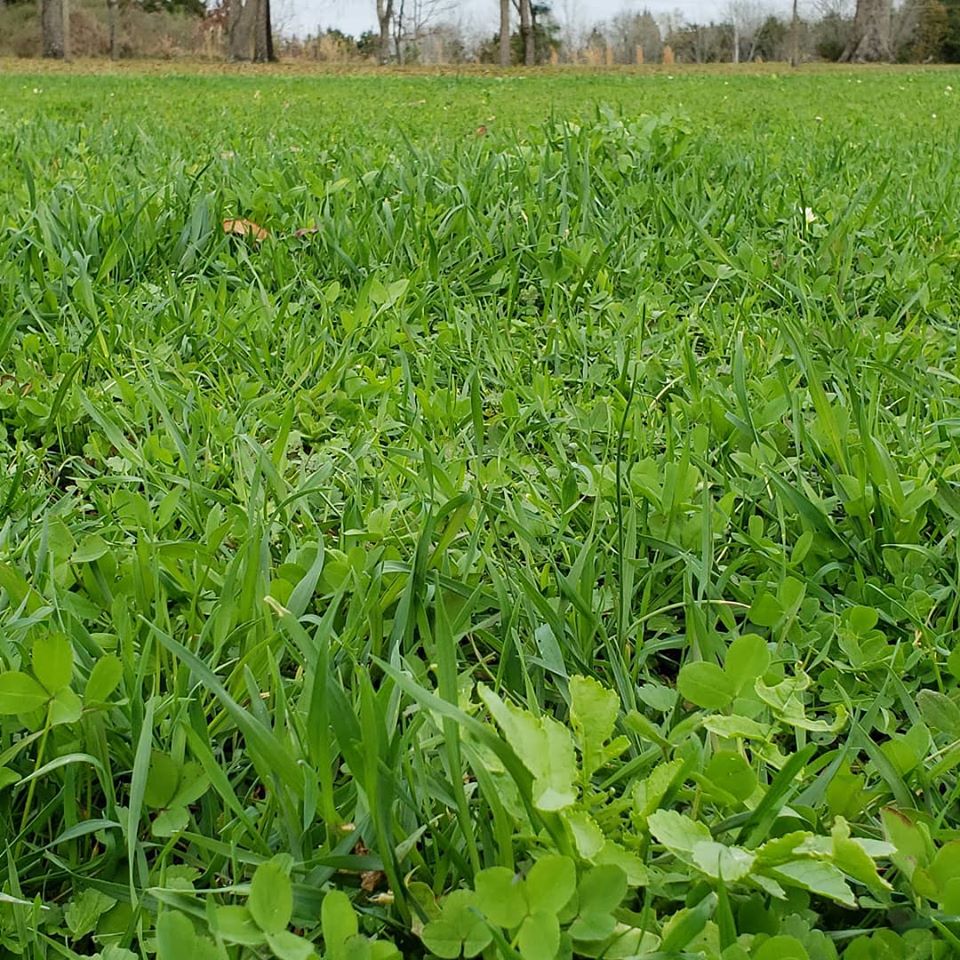
“WMS has a mixture called TriticOat that includes forage and triticale with black oats. Black oats grow much-more aggressively than other oats in the winter months, resulting in much-more tonnage from the black oats than from other oats. Black oats result in more regrowth, and deer prefer them more than other oat varieties. WMS typically doesn’t see cold injury to the black oats like we do other oats.
“Triticale is a wheat/rye cross, and we use this blend because it carries a much-higher sucrose level than other cereal grains, making this plant much sweeter,” Bumgarner said. “This triticale variety is said to produce much-more tonnage than other cereal grains will during deer season. Many triticale varieties are designed to produce more tonnage in the spring, but we chose the variety of triticale that produces the most tonnage during the South’s deer season. This blend puts plenty of ‘groceries’ in the fields for the deer to eat with a lot of sugar content to attract deer during the South’s hunting season. This blend is very inexpensive. To purchase enough seed to plant a one acre food plot, or two, 1/2-acre plots, or four, 1/4-acre food plots is about $50.”
2) Middle-of-the-Road Budgets – If you have more dollars to spend on your whitetail deer food plots, Bumgarner suggests a blend that includes the two cereal blends recommended earlier, triticale and black oats, and adding annual clovers and brassicas. This variety of seeds won’t increase your budget dramatically.

“I recommend our WMS Alabama Blend, the number-one brand of seeds for planting food plots that we sell in the South,” Bumgarner explained. “This blend features triticale, black oats and a variety of wheat that produces a lot of leaves. But no hairs, which deer don’t like, develop on the ends of the wheat seeds when they seed out in the spring. Deer and turkeys will eat the seeds and the leaves of this type of wheat, so planting this wheat variety in the fall also provides food for deer and turkeys in the spring. This mix also contains Driller Radish seeds and two biomast clovers: frosty berseem and FIXationN balansa clover, which are two of the white, flowering, winter peas to give deer more to eat.”
Wildlife Management Solutions recommends using 1-1/2 bags of this WMS Alabama Blend per acre, costing about $53 per acre. Some landowners and land managers prefer to plant two bags of acre.
3) Robust Seed Budgets – “If you have a more-robust budget for seeds, consider planting some of your green fields with the WMS Alabama Blend of seeds, and in other fields our WMS Deer Magnet,” Bumgarner advised. “On the green side of this blend, we add triticale and black oats and a wider variety of clovers, like frosty berseem, FIXatioN balansa, as well as Persian clover, crimson clover and arrowleaf, plus winter peas, daikon radish and chicory. The WMS Deer Magnet produces probably the best mixture for a food plot you can plan to hunt over for deer season, feeds deer and turkeys through the spring and almost all the way through the next summer, due to all the different varieties of clover.”
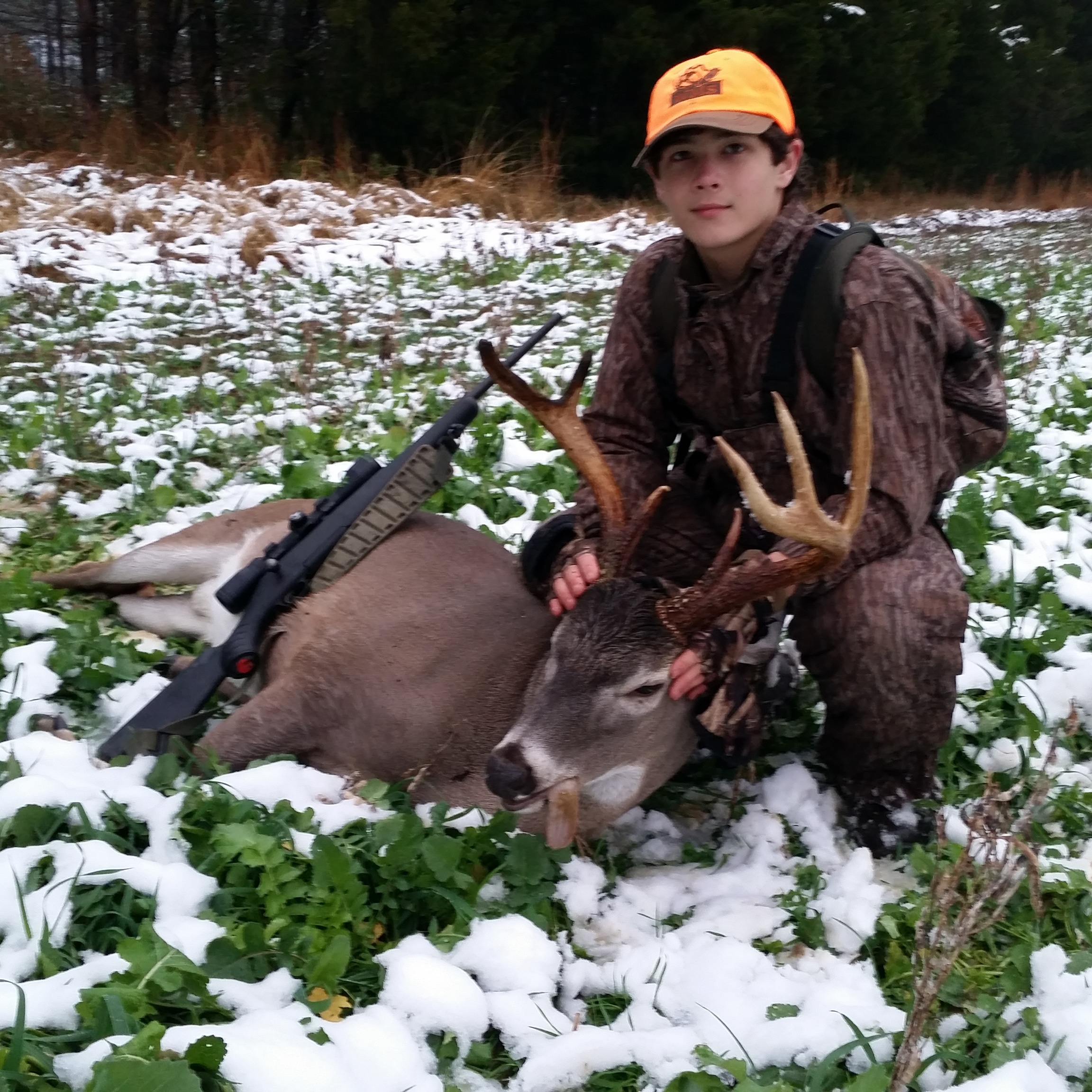
Alabama Liquid Fertilizer and Supply Inc.
This company has come out with a liquid fertilizer that you spray on green fields after the crop already has started to grow and/or just before it matures. Although I can’t understand how a fertilizer that’s sprayed on top of a crop will help the crop grow more and be more nutritious for deer and turkeys than a fertilizer that’s put in the ground, I’ve interviewed some hunters currently using Alabama Liquid Fertilizer who have had amazing results with this product.
Dr. John Sortino is a physician at Fort Rucker near Enterprise, AL.
“I saw an interesting brochure on liquid fertilizer, so I called and talked to Chris Grantham, the president, and decided to give the product a try. We’d been fertilizing our green-field plantings with 13-13-13 when we planted. I was interested in this liquid fertilizer because it was to be applied to the plants after they started growing. The fertilizer was absorbed through the leaves, which made this fertilizer unique. I learned that deer would eat the plants with the fertilized leaves, due to the extra protein in the leaves, and the leaves were more palatable because of the addition of liquid fertilizer.,” Sortino said.

When Great Days Outdoors questioned Sortino regarding what types of results and differences he saw after applying the liquid fertilizer to his food-plot plantings the findings were positive.
“In years past, we bought permits to hunt over bait and placed our feeders out in the middles of the green fields. Once we did that, the deer might graze some on the food plot, however, they spent most of their time at the feeders. The deer primarily would come up to the feeders and eat the corn on the ground, “Sorino said.
“But after we added Alabama Liquid Fertilizer to the plants, the deer came out of the woods, fed on the food plot all the way out to the feeder, ate some of the corn and then grazed on the food plot again as they returned to the woods. Instead of spending almost all their time around the feeder, the deer mostly grazed on the food plots where we had sprayed.”
Sortino also noticed a difference in their turkeys when they came out of the woods. They would walk through the green fields before they had been sprayed with Alabama Liquid Fertilizer, eat the corn and return to the woods. After he sprayed on the green fields, the turkeys would come out to the food plot, peck on the leaves and the other plantings in the food plot, take a few kernels of corn and then feed in the food plot once more, until they returned to the woods. Instead of spending most of their time at the feeders, the turkeys fed at the food plots.
Sortino realized then that something was different about our food plots from the year before that included this change in the deer and turkeys’ feeding habits and the amount of time they stayed in the field.
“Both deer and turkeys fed more on the food plots, after we sprayed the liquid fertilizer, than they did eating at the feeders. I also noticed that the deer coming to the food plots seemed fatter at the end of the season than they were at the first or the middle of the season,” he said

Sortino and his friends attached a sprayer to the back of a 4-wheeler and diluted the liquid fertilizer with water per the instructions on the fertilizer. Using the sprayer enabled them to put the liquid fertilizer out quickly. Sortino observed that the liquid fertilizer seemed to improve the health of the deer feeding on the food plots and to attract even more deer than the green fields before they were sprayed with the liquid fertilizer. All the hunters around Sortino’s land had planted green fields and had feeders out.
“I’m convinced the liquid fertilizer helped to pull deer onto our property from neighboring lands. The liquid fertilizer seemed to be that little extra something that the deer wanted more than the food offered on other properties,” Sortino explained. “Perhaps the deer could smell that additional fertilizer or protein and the minerals in the leaves that we sprayed. Anyway, our green-field plantings were far more preferred by the deer and turkeys than the green fields not sprayed with liquid fertilizer. I’m so convinced that this product enables us to see more deer and turkeys on our green fields, that we’ll be using Alabama Liquid Fertilizer again in 2020.”
Bryan Rogers, lives in Tennessee and works at the Marshall Space Flight Center in Huntsville, AL. and has limited planting and hunting time.
“The only time I have to hunt is on weekends. I’ve searched for some type of quick fertilizer that I can put out easily and quickly, since I don’t have much time to hunt or plant. I’m not interested in buying a bunch of granular fertilizer, hooking up a tractor and then putting the fertilizer around the plants,” Rogers said. “But with liquid fertilizer, I can place it in an ATV sprayer, mix it with water and spray my green fields quickly from start to finish. With liquid fertilizer, you let your whitetail deer food plots come-up and start growing before you spray them. The plant takes the fertilizer in through its leaves and stems instead of through the ground.”
Rogers allows his fall deer food plots to reach six to eight inches tall before spraying the liquid fertilizer, which is generally a week or two before deer season starts. He’s learned that if he sprays a green field the month before the opening of deer season, by opening day the deer will have eaten the green field, so the plants are only one to two inches high. He says the fields will look like you’ve taken a lawn mower through the fields.
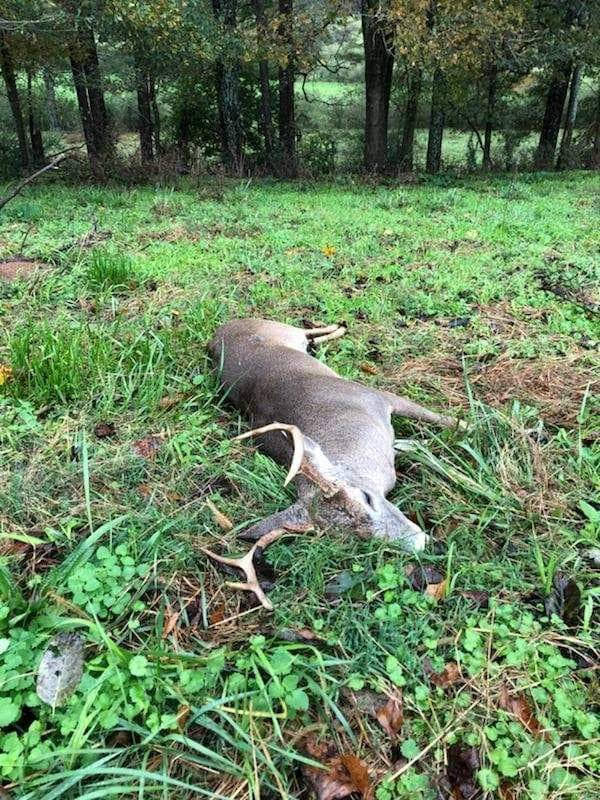
“One year before I began using liquid fertilizer, I had to replant my entire green field because the fertilizer had dietary calcium in it, and I believe the deer thought that these food plots were one giant mineral lick,” Rogers recalled.
When Rogers first planted green fields, he used 13-13-13 or 15-15-15 or whatever type of fertilizer his father had left in his fertilizer bin after fertilizing his hay fields.
“Before I started using liquid fertilizer, my fall deer food plots were thick and pretty, and the deer would come to them and eat but not stay there long during daylight hours,” Rogers reported. “Once I began spraying Alabama Liquid Fertilizer I noticed that the deer would feed on the plants as soon as they stepped out of the woods and would continue feeding on the plants as they walked across the field and back into the woods.”
Since Rogers’ whitetail deer food plots get hit heavily by deer during deer season, he puts-up isolation cages around a small portion of the green field to learn how much the green-field plants will grow without the deer feeding on them. The plantings inside the cage will be six to eight inches tall, while the plants in the rest of the green field only will be one to three inches tall.
“Besides this liquid fertilizer aiding in seed growth, it’s extremely easy to apply too,” Rogers emphasized. “I just mix it to the percentage of water that the sprayer puts out to deliver two gallons of fertilizer and water per acre.”
No Land and No Green Fields or Only Very Small Green Fields
“One of the advantages to using liquid fertilizer is that it has the same effect on native plants as it does on crops that are planted in fall deer food plots,” says Chris Grantham, the owner of Alabama Liquid Fertilizer. “By spraying liquid fertilizer on greenbrier (smilax) and various bushes, poke sallet and any other type of plants that deer will feed on at the time of year that you’ll be hunting those deer, the plants will receive their nutrition through their leaves and produce more-palatable and healthier forage than the forage that hasn’t been fertilized.”
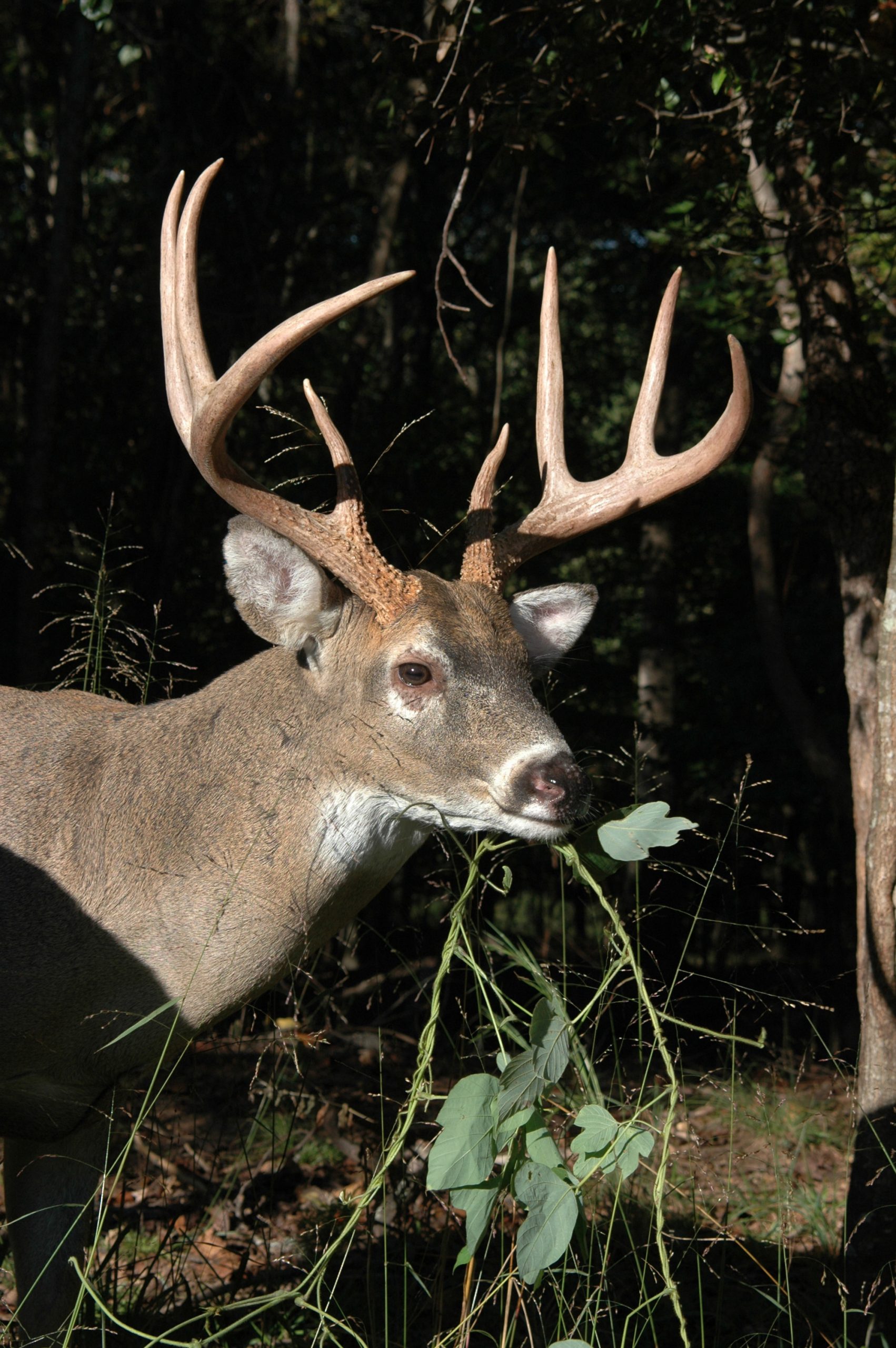
If you have small 1/4-acre whitetail deer food plot and/or small hidey-hole no-plow hunting spots, the crops you plant for early-season bowhunting also will benefit from an application of liquid fertilizer. So, even if you have a limited budget or no budget at all for green-field plantings, you can take advantage of fertilizing native plants and small bowhunting areas by using liquid fertilizer.
Alabama Liquid Fertilizer and Wildlife Management Solutions are in the problem-solving business for landowners and hunting clubs before these individuals spend the money to plow or disk the ground, put in lime and fertilizer and plant the seeds and then not get good results. By concentrating on a very-specific region of the country, they both provide fertilizer that deer love and design new and better seeds for southern fall deer food plots.

